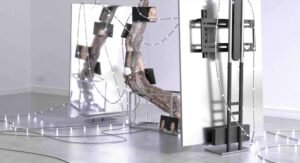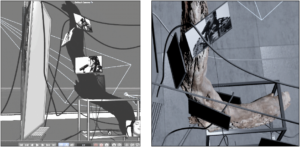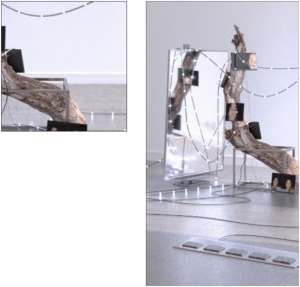
Concept
The installation artwork consists of two mirrors, which are used to create optical illusions and reflections, thereby enhancing the work’s duality and cultural identity. These mirrors are placed on both sides of the dead tree trunk, presenting the audience’s own images from different angles, giving the audience a vague sense of identity.

The device is equipped with several pedals, allowing the audience to interact with the device by stepping on the pedals, affecting the light, shadow, and sound effects in the work, echoing elements such as repetition and chorus in Ibeyi’s music. Each different pedal controls a different part or instrument, allowing the audience to perform with Ibeyi, allowing the audience to emotionally connect with the installation and Ibeyi’s work.

LED light strips are used to highlight the duality theme of the installation artwork. They are placed around the dry tree trunks and on the ground, creating a rhythmic feel that changes with the rhythm of the music and the interaction of the audience. The light and shadow effect of the LED light strips echoes the rough surface of the dry tree trunks, forming a strong visual contrast and creating a dual visual perception.

The audiences stands in the area where the pedals are distributed, in front of the main installation area, and the audience will be able to interact with the main part of the installation by stepping on the pedals in this area.